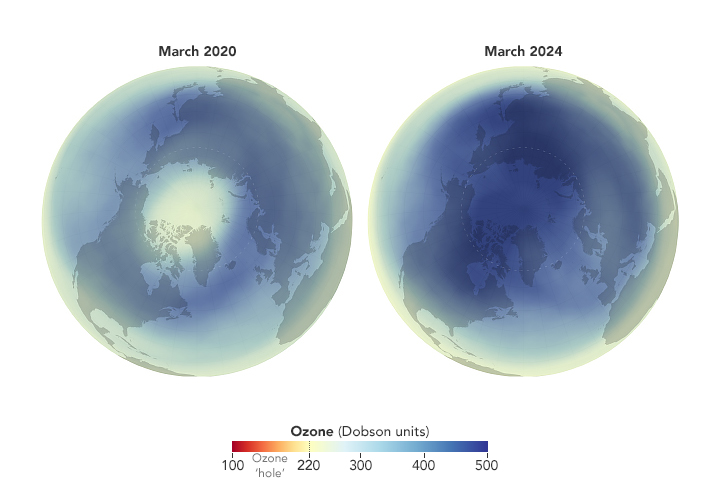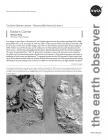- Home
- Missions
- Data
- Communications
- People
- The Earth Observer Newsletter




Recent Imagery
You will be directed to the NASA Visible Earth webpage when you select Images by Mission below, or click on the images at right that are randomly generated to represent four out of all possible topics.
The Earth Observer has a new look! Visit the NEW Earth Observer website.
The Earth Observer: Jan - Feb, 2008
In This Issue
Click title below to view page
- Editor’s Corner Front Cover
- Feature Articles
- Pollution Trials for the Beijing Olympics4
- Using Satellite Remote Sensing to Evaluate the Effectiveness of the Ramsar Convention on Wetlands7
- Unscrambling the Cause of the Recent Ocean Cooling with Net Radiation Observations from the CERES Instrument on the Terra Satellite16
- Meeting/Workshop Summaries
- GRACE Science Team Meeting Summary20
- IEleventh HDF/HDF-EOS Workshop Summary22
- Summary of the Eighth CERES-II Science Team Meeting24
- In The News
- NASA-Conceived Map of Antarctica Lays Ground for New Discoveries30
- NASA Sees Arctic Ocean Circulation Do an About-Face32
- MNASA Langley Celebrates CERES Project Anniversary34
- Smaller Storms Drop Larger Overall Rainfall in Hurricane Season35
- NASA Climate Change Peacemakers Aided Nobel Effort36
- Regular Features
- EOS Scientists in the News38
- NASA Science Mission Directorate—Science Education Update40
- Science Calendars41
Editor’s Corner
Michael King, EOS Senior Project Scientist
I am happy to report that, on December 26, the President signed into law the omnibus spending bill for 2008, giving NASA $17.117 B, an increase of 5.2% over 2007. Of that amount NASA Earth Science received $1.508 B, an increase of 4.4% over the 2007 budget, and 0.7% over the President’s proposed Earth Science budget for 2008. I believe much of this increase can be attributed to the National Research Council’s decadal survey for Earth science—Earth Science and Applications from Space: National Imperatives for the Next Decade and Beyond. The report recommended that, “The U.S. government, working in concert with the private sector, academia, the public, and its international partners, should renew its investment in Earth observing systems and restore its leadership in Earth science and applications.” It expressed concern that the 30% decrease in Earth science funding so far this decade could decrease the number of Earth-observing sensors on NASA spacecraft by 40% during this decade if the past funding trend continued. In addition...
Read more...

